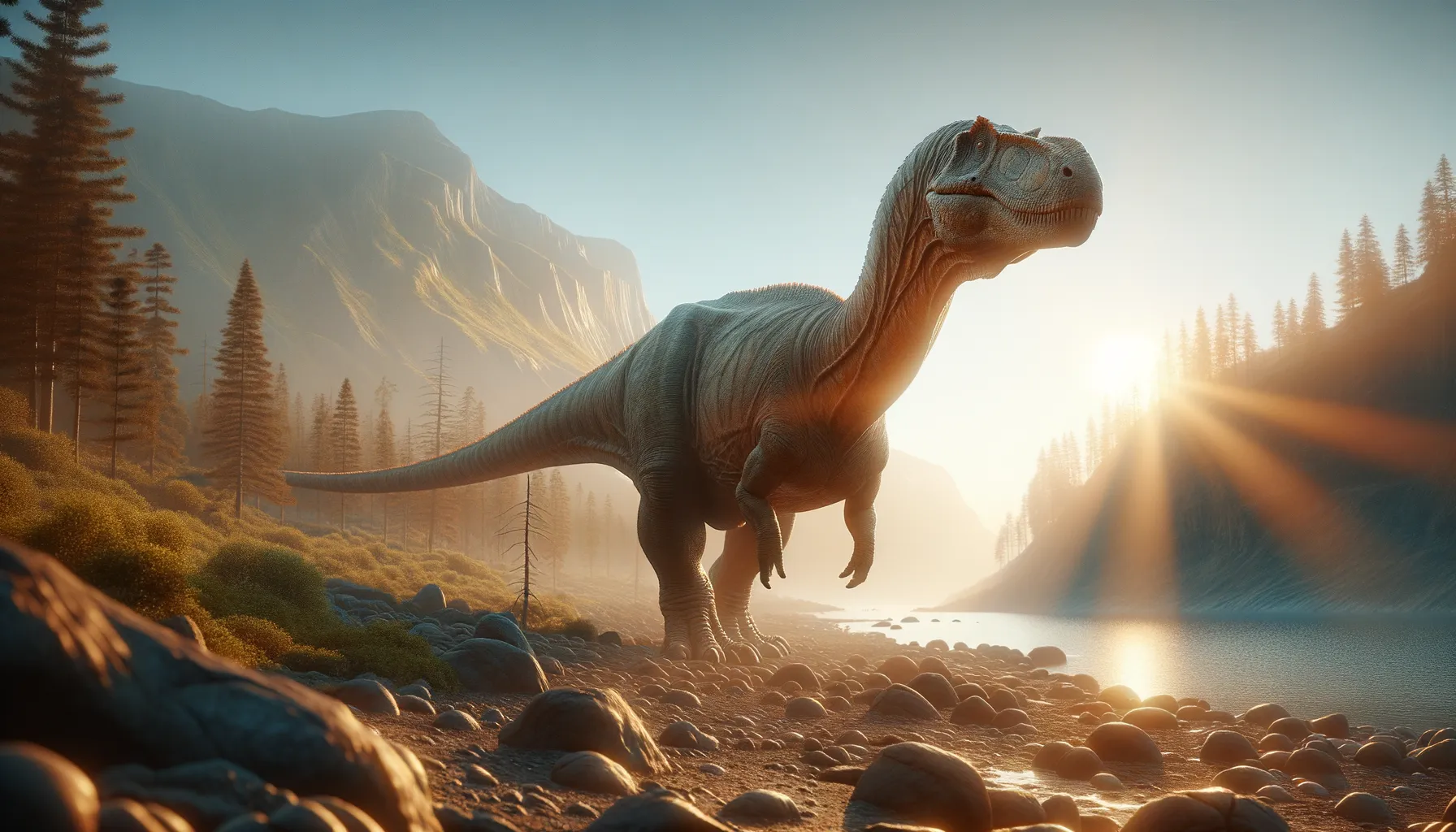
Gobititan
Colossal giant of Asia's ancient plains.
Period
Cretaceous
Length
Reached up to 20 meters in length.
Height
Approximately 5 meters tall at the hip.
Weight
Estimated to weigh around 20 tons.
Gobititan was a colossal herbivorous dinosaur that roamed the earth during the early to mid-Cretaceous period. As a member of the titanosaur family, it was distinguished by its long neck and tail, which helped balance its enormous body. This dinosaur represents an important piece in the puzzle of titanosaur migration and diversification, especially in Asia. Its discovery highlighted the global distribution of these giants, contributing to our understanding of dinosaurian ecosystems.
Diet
Gobititan primarily consumed a diet of plants and foliage. Its long neck allowed it to reach high vegetation that other herbivores could not access. This helped it avoid direct competition for food with other species.
Hunting
Gobititan did not hunt as it was a herbivore. Instead, it foraged for plant material, utilizing its significant size to reach and consume a large amount of vegetation. Its massive bulk likely deterred predators from attempting to hunt it.
Environmental challenges
The dinosaur faced harsh climatic conditions in the Gobi Desert, which could include periods of drought and sparse vegetation. Its large size would have required vast amounts of food, posing a challenge during times of scarcity. To cope, Gobititan likely roamed over great distances to find sufficient sustenance. The changing landscape also meant it needed to adapt to different plant species spread across the region.
Speed
Gobititan was a slow-moving dinosaur due to its massive size.
Lifespan
It likely lived for several decades, similar to modern large herbivores.
First discovery
First discovered in the Gobi Desert of China in 2003.
Fun Facts
- Gobititan was a gigantic dinosaur that lived about 100 million years ago during the Cretaceous period.
- It was discovered in the Gobi Desert of China, hence the name 'Gobititan'.
- Gobititan belonged to the group of dinosaurs known as sauropods, which were known for their long necks and tails.
- This dinosaur was a herbivore, feeding on plants available in its environment.
- The discovery of Gobititan helped scientists understand more about the migration of dinosaurs between Asia and other continents.
- Gobititan is important for piecing together the history of sauropod evolution on Earth.
- While not among the largest sauropods, Gobititan was still impressive in size and structure.
Growth and Development
Gobititan experienced considerable growth over its lifetime, an adaptation likely meant to deter predation. Juveniles would have started small and vulnerable, quickly growing to large sizes. Like other sauropods, growth spurts may have occurred in stages, providing a balance between energy consumption and size increase. These growth patterns helped the species survive in their challenging environment.
Habitat
Gobititan inhabited the semi-arid regions of what is now the Gobi Desert. This habitat had a mix of open plains and scattered forested areas. The dinosaur preferred regions with abundant vegetation to support its herbivorous diet. Changing climate and geological conditions during the Cretaceous period frequently altered its habitat, necessitating adaptation.
Interaction with other species
Gobititan likely coexisted with other herbivorous species, with limited direct competition due to its preference for high foliage. Its size made it less vulnerable to most predators, although juveniles may have been at risk. Coexisting with predatory dinosaurs, it might have used group tactics for protection. Additionally, Gobititan's presence would have influenced the plant communities and, indirectly, other herbivores sharing its space.
Natural lifespan
Natural lifespan similar to modern large mammals, potentially several decades.
Reproduction
Reproduction likely involved laying eggs, as with other sauropods, with nests possibly made in sandy or loose soil. Females might have laid multiple eggs at a time to increase chances of offspring survival. The eggs would hatch into small juveniles, which grew rapidly to avoid predation. Parental care specifics remain unclear, though some level of protection during the early life stages is plausible.
Social behaviour
Gobititan may have displayed social behavior, possibly forming loose groups or herds for protection. These groups could have helped in resource location and predator detection. Adult individuals likely interacted minimally, given their solitary plant-eating habits. This loose social structure mirrored modern large herbivores, focusing on survival more than socialization.
Fossil locations
Fossils of Gobititan have been found specifically in the Gobi Desert region of China, indicative of its historical range. These sites provide insight into the diversity of sauropods during the Cretaceous period. The discovery in such a remote area underscores the significance of paleontological exploration in Asia. Additional potential sites may exist but remain unexplored due to logistical challenges.
